2020 Lexus NX300h Makes Hybrid Crossovers Look Edgy
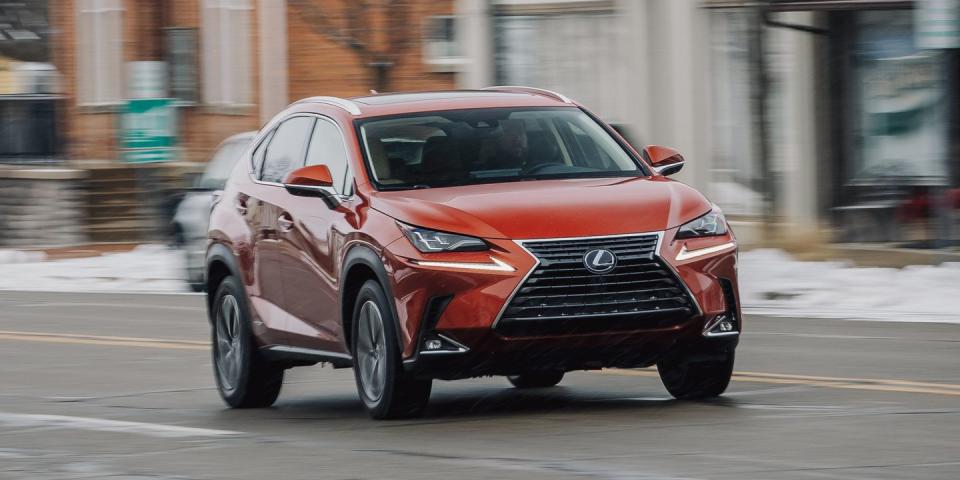
Like a family of jack rabbits, the breed of subcompact luxury crossovers is multiplying at an alarming rate. Since 2018, when the Lexus NX was last refreshed, and now, the segment has added all-new models such as the BMX X2, Cadillac XT4, Jaguar E-Pace, Lincoln Corsair, and Volvo XC40. Still, the Lexus outsold all but the XT4last year. That popularity helped push the hybrid version, the NX300h to its best-ever sales year in 2019. It had been awhile since we last tested an NX, so it seemed like a good time to reevaluate where the crossover that looks like it was designed by knives ranks among its newer classmates.
High-Priced Extras and Hybrid Exclusivity
For 2020, the NX receives minor alterations inside and out. For example, you can now get the Mark Levinson/Navigation package in more trim levels and there are also more standard features across the lineup. Every model adds Android Auto, active cornering assist intended to suppress understeer, enhanced lane-keeping assist, traffic-sign recognition, and a power-adjustable steering column. The NX300h starts at $40,095—$2200 more than the front-drive, non-hybrid base model and $800 more than its all-wheel-drive equivalent. Until the hybrid Lincoln Corsair Grand Touring arrives later this year, Lexus is the only brand that offers a traditional hybrid in this class—the NX300h also sort of competes against the Lexus’ less expensive and smaller UX250h.
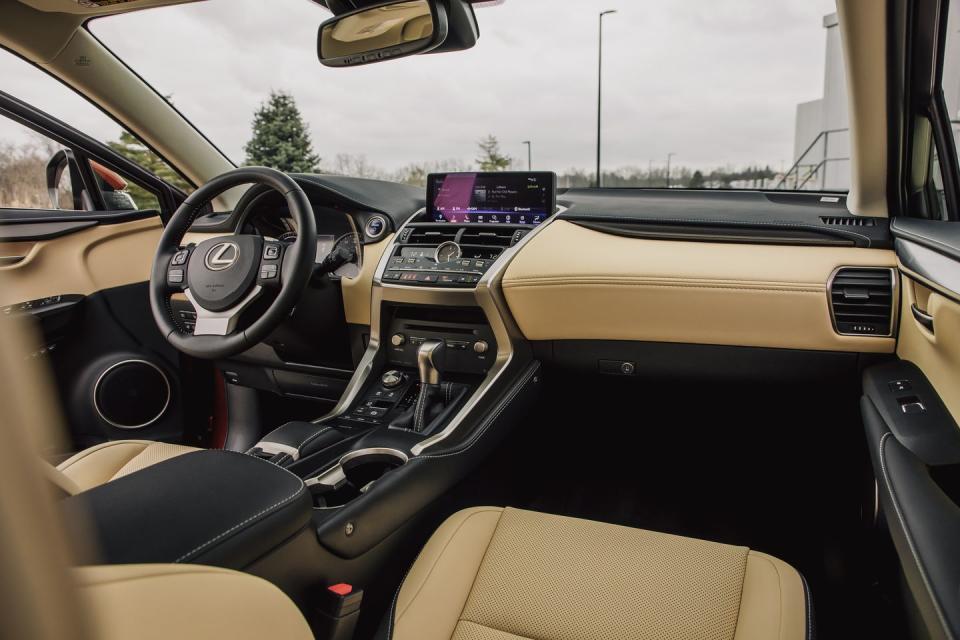
At an as-tested $50,555, the NX300h arrived loaded up with $10,500 worth of extras. Almost half of that dollar amount came from the $1515 triple-beam LED headlights and the aforementioned $2920 Mark Levinson audio system. Another big-ticket item: the $3270 Premium package (several active-safety features, heated and ventilated front seats, a sunroof, and more). Other miscellaneous options include a 360-degree camera, heated steering wheel, power liftgate, self-parking assist, and Cadmium Orange paint. With that eye-catching orange glinting off heavily creased bodywork, our NX300h was easy to spot among the horde of otherwise ordinary crossovers and SUVs that oversaturate parking lots. Less conspicuous was its hybrid powertrain, which is only advertised with subtle exterior badges and the lowercase h tacked to its trim name
The NX300h features a 2.5-liter Atkinson-cycle inline-four that pairs with an electric motor/generator. Combined they feed 194 horsepower to a continuously variable automatic transmission (CVT). To provide all-wheel drive, there’s a second electric motor mounted on the rear axle. What the hybrid system doesn't do is move the NX with much authority. We tested zero to 60 mph in 8.1 seconds; its 50-to-70-mph passing power—or the lack thereof—registered a long 5.6 seconds. A soft brake pedal proved tricky to operate in stop-and-go traffic due to uneven responses as the NX transitioned from regenerative braking (braking done by the electric motor) to the four-wheel disc brakes. While its engine noise and ride isolation always remained within suitable levels, the NX's nonchalant body motions and uncoordinated steering made us pine for the more entertaining and dialed-in alternatives like the E-Pace, the X2, and the XC40.
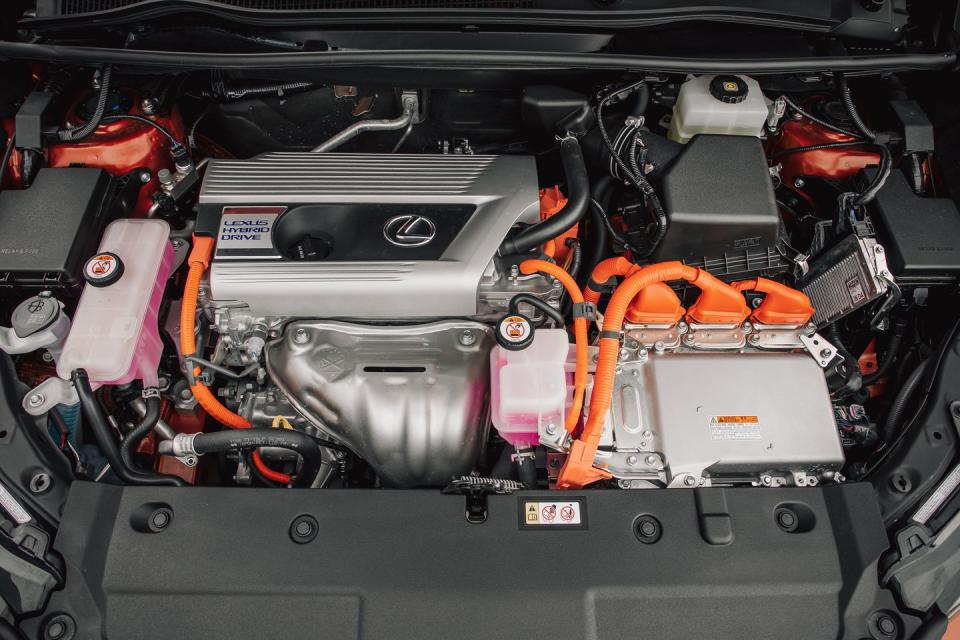
Only Lexus sells a hybrid in this segment, so buyers who value fuel economy over excitement won’t need to shop around. The NX300h is rated at 33 mpg city, 30 highway, and 31 combined. We tested both on our 75-mph real-world route where the NX300h returned 29 mpg highway. For comparison, the smaller, all-wheel-drive UX250h posted 31 mpg. Those numbers aren't that impressive compared with non-hybrid rivals, but hybrids are at their most efficient around town. Keep it running like an Uber in a city, and the NX300h should require fewer fill-ups and boost its appeal versus conventional opponents.
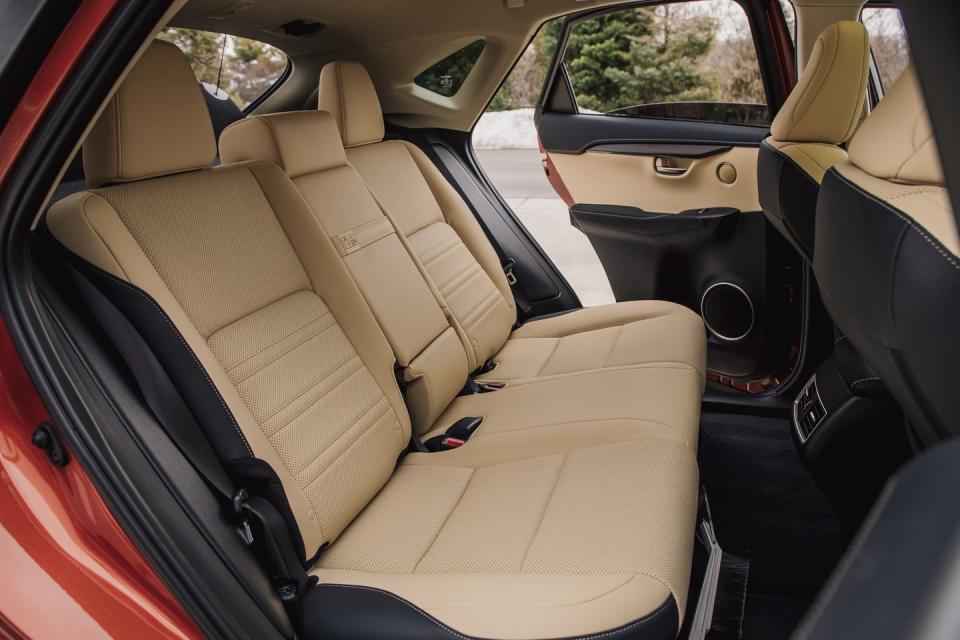
Luxurious Appointments and Annoying Quirks
Inside, the Lexus lives up to its luxury pedigree. Upscale materials and soft-touch surfaces fill the cabin. The driver's seat is set higher (27.6 inches) than several other subcompact crossovers, and it provides a commanding view over the hood. Rear visibility is actually better than in the UX250h. Not surprisingly, the hybrid NX also delivers a bigger back seat and cargo area than its little brother. We managed to fit twice as many carry-on suitcases (eight total) behind the back seat in the NX300h. It can also pull up to 2000 pounds whereas the UX isn't rated for towing.
However, the NX has some ergonomic missteps. A small panel that controls the automatic high-beams, heated steering wheel, and other functions is positioned near the driver's left knee making it difficult to use. The 10.3-inch infotainment display is operated via an unintuitive touchpad that proved irritating. And aside from a small shelf in the center stack and the two cupholders in the center console, there's very little extra storage space. We were also surprised sun visors that don't extend and by the lack of charging ports in the back seat.
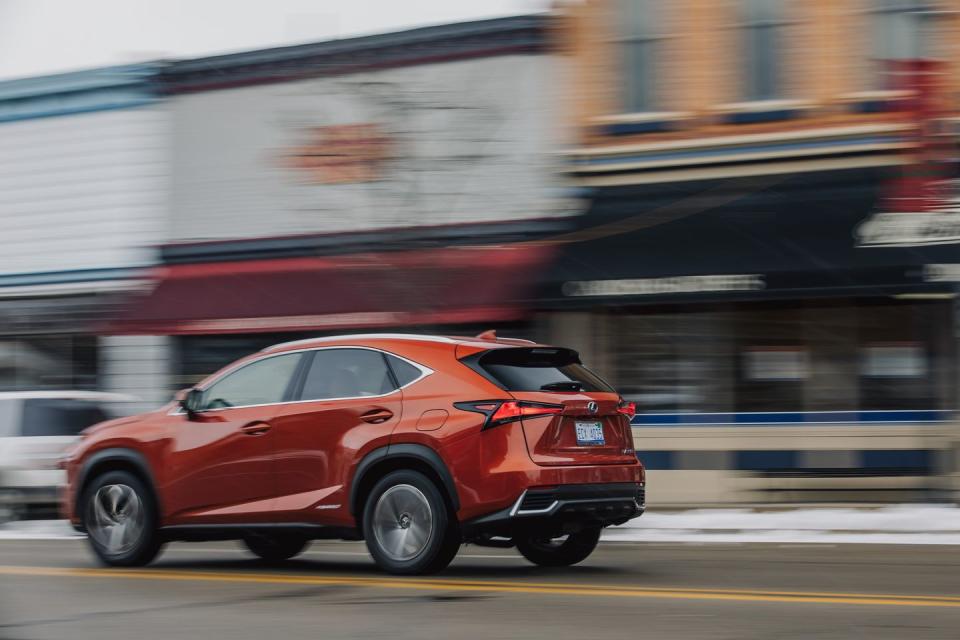
Over the past couple decades, hybrids have become a Lexus staple, with more than half of its current lineup available with the technology. The Mini Cooper Countryman does offer a plug-in model and the hybrid Corsair Grand Touring is coming soon, but right now the NX300h is really the only hybrid kid on the block. It’s smaller showroom mate, the UX250h, just can’t measure up. Sure, the NX is older and not as quick than the fresh batch of crossovers in this class, but its sales numbers prove that it's still a popular, if angular, choice.
You Might Also Like

 Yahoo Autos
Yahoo Autos 